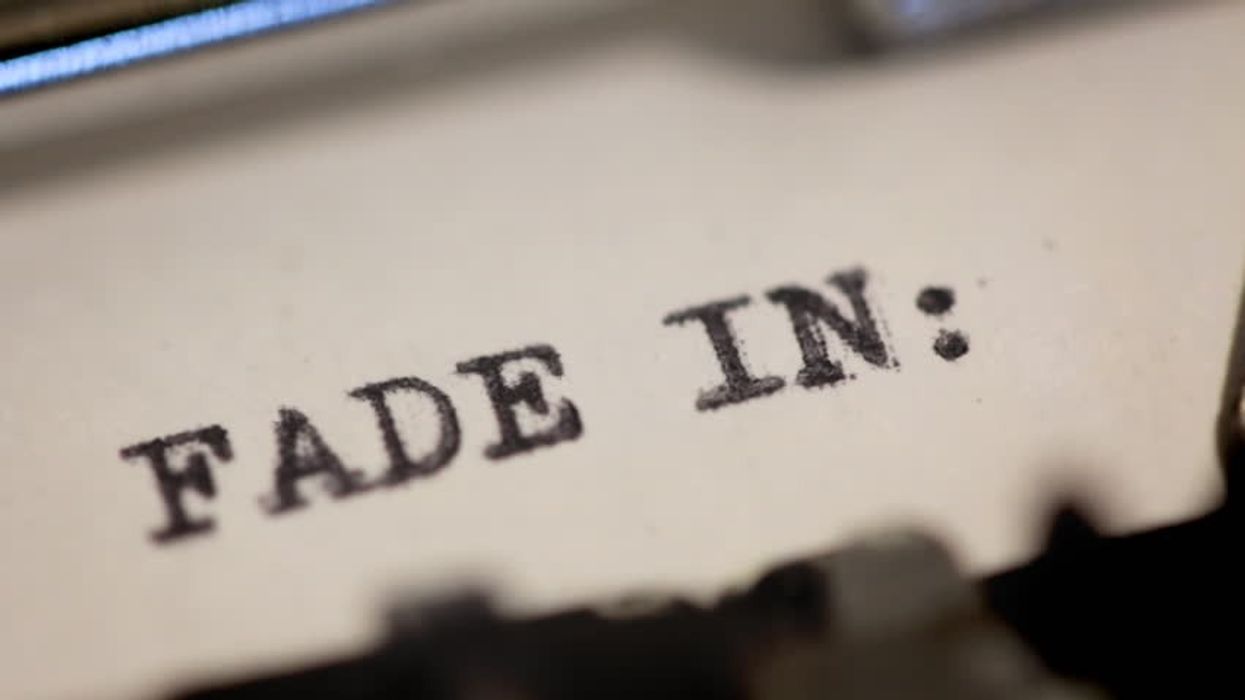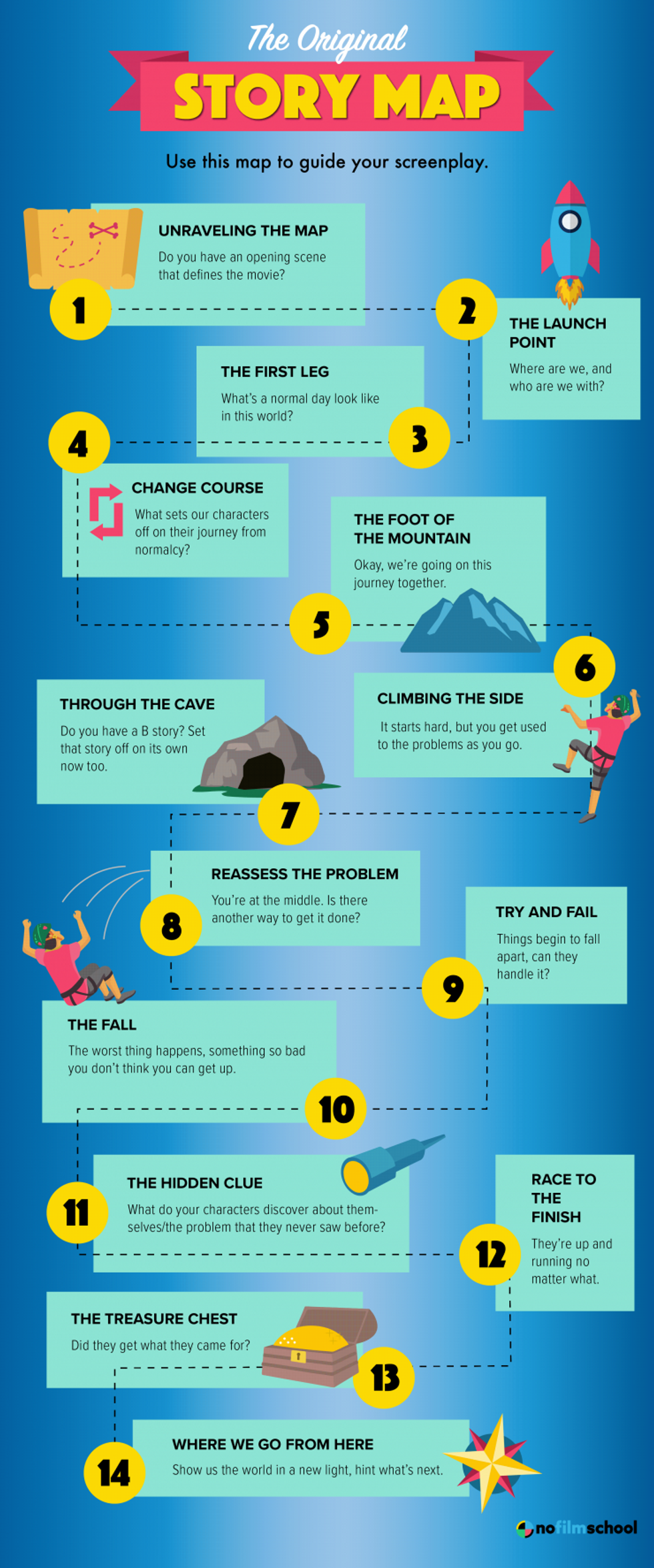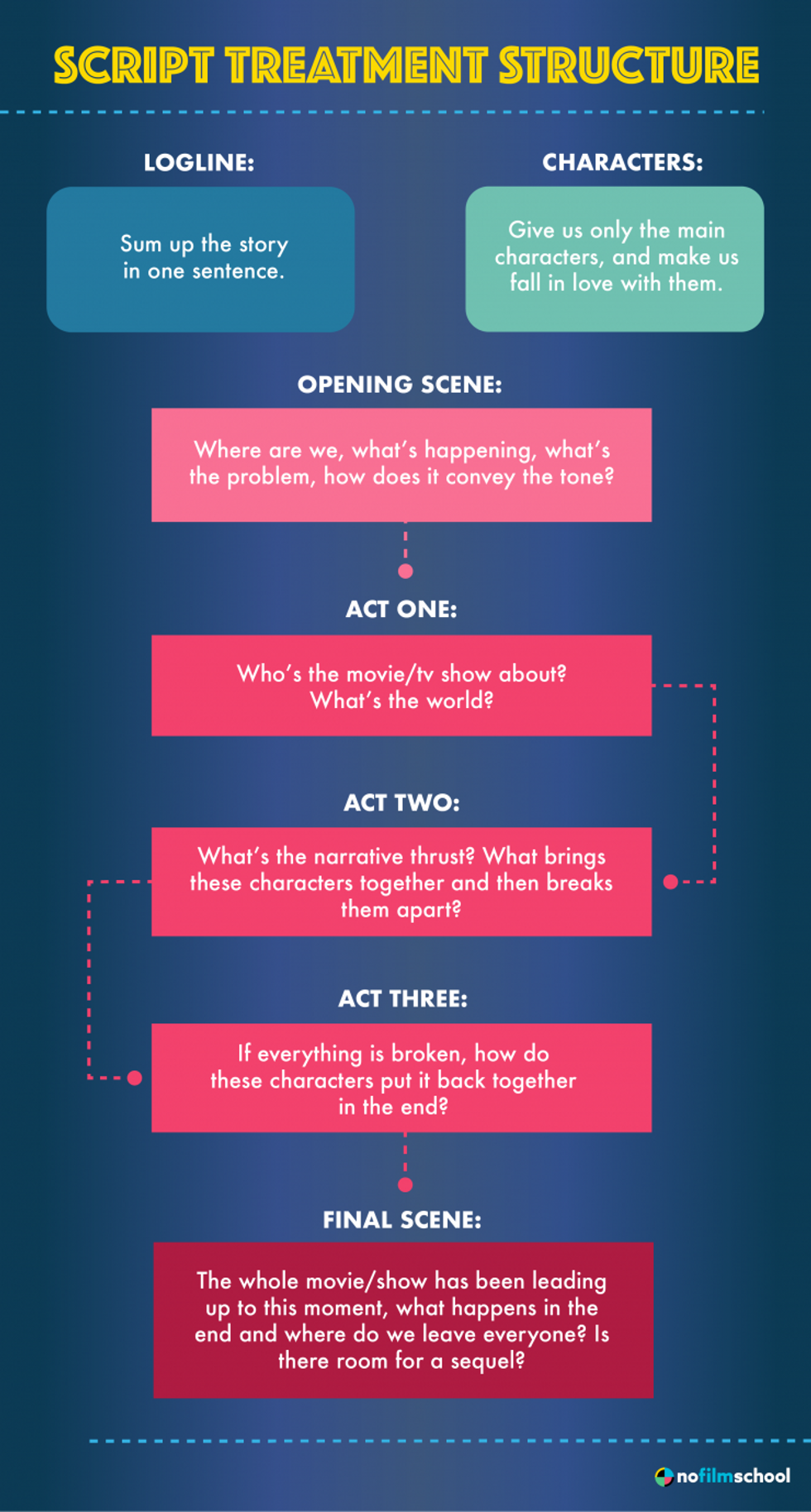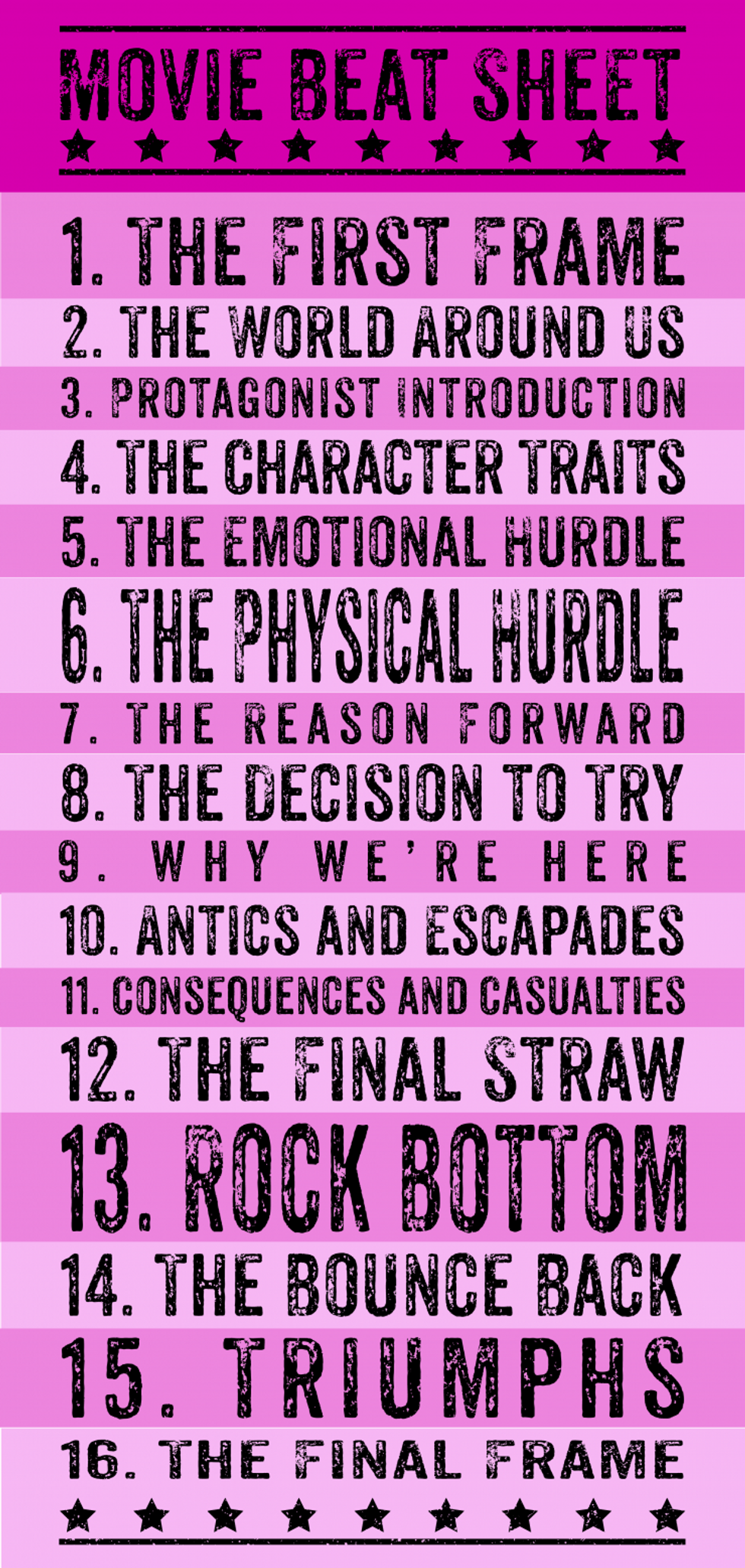How To Write a Great Screenplay
Your first draft is never your final draft, especially when you are learning how to write a movie script.

I remember sitting in class and learning how to write a screenplay. I also recall the click of the keys when I sat down to write my first screenplay. It was an exciting feeling, but as I crossed from page one to page two, I was never sure where I’d be going. When I finally typed “Fade Out,” my heart was a flutter. But as you know, all writing is rewriting.
So let's learn how to write a movie script.
In this post, I’m going to take you through the basics of how to write a screenplay, helping you strategize how to move forward after draft one.
As you know, you need a polished script to break in. That means going over it again and again. You better get used to hearing “all writing is rewriting.”
Let’s fade in…
When you get to the end, there’s a great sense of accomplishment and excitement.
How to Write A Screenplay or a Movie Script
Screenplay writing is not an easy task and learning how to write a screenplay for a movie is an arduous task. It’s endless planning, problem-solving, deleting, rewriting, and frustration. But when you get to the end, there’s a great sense of accomplishment and excitement.
If you’re willing to go through all that, I’m willing to give some advice on how to write a great screenplay.
The first thing I’d recommend is to create an outline.
Not getting stuck means you will finish. Finishing means you can rewrite.
How To Write A Screenplay with an Outline
A screenplay outline is like your map to the treasure. If you determine where the story needs to go before hopping into your screenwriting software and typing a draft, you’ll be more likely not to get stuck. Not getting stuck means you will finish. Finishing means you can rewrite.
I like to break my outlines down in 15-page intervals. In the first 15 pages, I like to establish the characters, world, and the problem. In the next 15, I work on getting the gang together, learning their strengths and weaknesses, and thrusting the story into Act II.
The first 15 pages of Act II are for bonding the people and throwing the audience some curveballs, the next 15 pages are about putting everyone in a hard place. Things have to go wrong here.
We’re then in Act III. The first 15 of Act III I break everything we knew apart and crush hopes and dreams. With the last 15, I put everything, or most things, back together again. That all adds up to around 90 pages, but you can add or subtract to each portion as necessary, depending on the number of characters, intricacies of the plot, and intangibles.

What’s nice about this version of an outline is that you can go back to it over and over again. These chunks of pages are easy to look at a little at a time. That makes moving forward less intimidating and story elements easier to track.
That’s my routine, but you have to find yours. Sometimes it’s easier to learn screenplay writing by getting great at outlines, and then moving forward. But what if you just want to write blind and let is come as you go?
Movies can be a bunch of scenes where people try and fail to do things. When stacked together, they teach us a compelling lesson about how someone can arc (or not).
How Do You Write A Screenplay Without Planning?
Much like rapping, sometimes you have to freestyle to learn your story’s beats. I’ve never been great at this option, but it’s a strategy that works for some people in screenplay writing. When I try to use this strategy, I like to take every movie script scene by scene. Ask yourself, "Who’s in this scene? What do they want? How can I stop them from getting it?"
Movies can be a bunch of scenes where people try and fail to do things. When stacked together, they teach us a compelling lesson about how someone can arc (or not). If I’m writing without an outline, I start every day the same: on page one. This makes the process longer, but I find that refining where I was (and editing where I’m going) gets me the best first draft.
Even if the inclination is to move back, the key is always to move ahead. The more new pages you get every day, the more you can refine tomorrow.
When I’m using this strategy, I may only write a few pages a day, but I set myself up when it comes time to go back and spend all my time tweaking and editing. I’ll have thought through lots of options and hopefully picked the best versions of each scene.
It may take me much longer to finish a draft if I write without an outline, but I do wind up with a more solid piece of work to hone and tweak.
Come to terms with your idea, decide why you want to write it, and use that passion to push through the 100 pages.
But I came here to learn how to write a movie script...
Here’s the thing, there are no shortcuts in screenwriting. You have to sit and pound the pages. There are lots of tools that can help you along the way, but the brunt of the work has to be done in front of the computer screen.
Most first drafts aren’t great. Most first drafts aren’t even good. You have to have a first draft to move anything forward. You’re not going to achieve learning how to write a great screenplay by reading a blog or Googling for tips. You’re going to do it by putting your butt in a seat and typing.
Come to terms with your idea, decide why you want to write it, and use that passion to push through the 100 pages. Outline. Or don’t. Just write. So let’s say you’ve made it and your first draft is complete. Where do you go from here?
You can get a first draft done, but the best scripts are sculpted.
How To Write a Great Screenplay: All Writing is Rewriting
After I finish my first draft, I treat myself to something. It could be new sneakers, movie tickets, a short trip somewhere fun, or anything to reward myself for the struggle of getting up the mountain. A few days later, I crane my neck back and look at the real summit.
I told you we’d say it over and over, but all writing is rewriting. You can get a first draft done, but the best scripts are sculpted. You chip away at stories, characters, and motivations until they sizzle and pop off the page. I usually try to attack the rewrite in a few stages. The first thing I do is lock the story. All of my first passes are just getting the scenes in the right order. I then worry about character arcs, and I do a dialogue pass at the very end.
I tweak action lines as I go, but my writing style is pretty sparse. I don’t use a lot of metaphors of flowery language, so I don’t think too hard about anything besides whether or not it’s clear what’s happening on the page. For me, the rewrite passes are the best parts of writing. You can take more chances here, delete pages, move things around, and have fun with the story.

As you lock the scene order, you can get into characterization. I love doing individual passes for each person, really making their voice come off the page, giving them individual ticks and may be repeated expressions — anything to cause emotions to soar.
Finally, I hit the dialogue and get rid of unnecessary lines and exposition. This is where I’m at my most ruthless and where I lose the most pages. Sure, all writing is rewriting, but how do you know when to stop?
I like to give myself a few weeks off between drafts. I get individual feedback from friends, and then I go to my manager. He and I strategize, finding a point where it feels like we’re in a good place to bring on other voices like directors and producers.
Then, if I haven’t been paid, I usually set a limit to the number of free passes I’m willing to embark on. That could be one for the producer and two for the director that comes on. Finally, when we go to buyers, I make sure my team is aware that the free work is done. I’ll do as many paid passes as it takes to get the movie into production, but that’s another story for another time.
As I mentioned earlier, you have to crank out the pages to become a professional writer. There is a blue-collar mentality to it. Even if screenwriting isn’t your day job, you have to be willing to put in the hours in on nights and weekends to make your dreams and projects come to fruition.
I look forward to reading your work soon!
- 10 Ways to Tackle Rewriting a Screenplay ›
- How to Write a Screenplay in 10 Weeks ›
- How Long Does it Take to Write a Screenplay? ›















